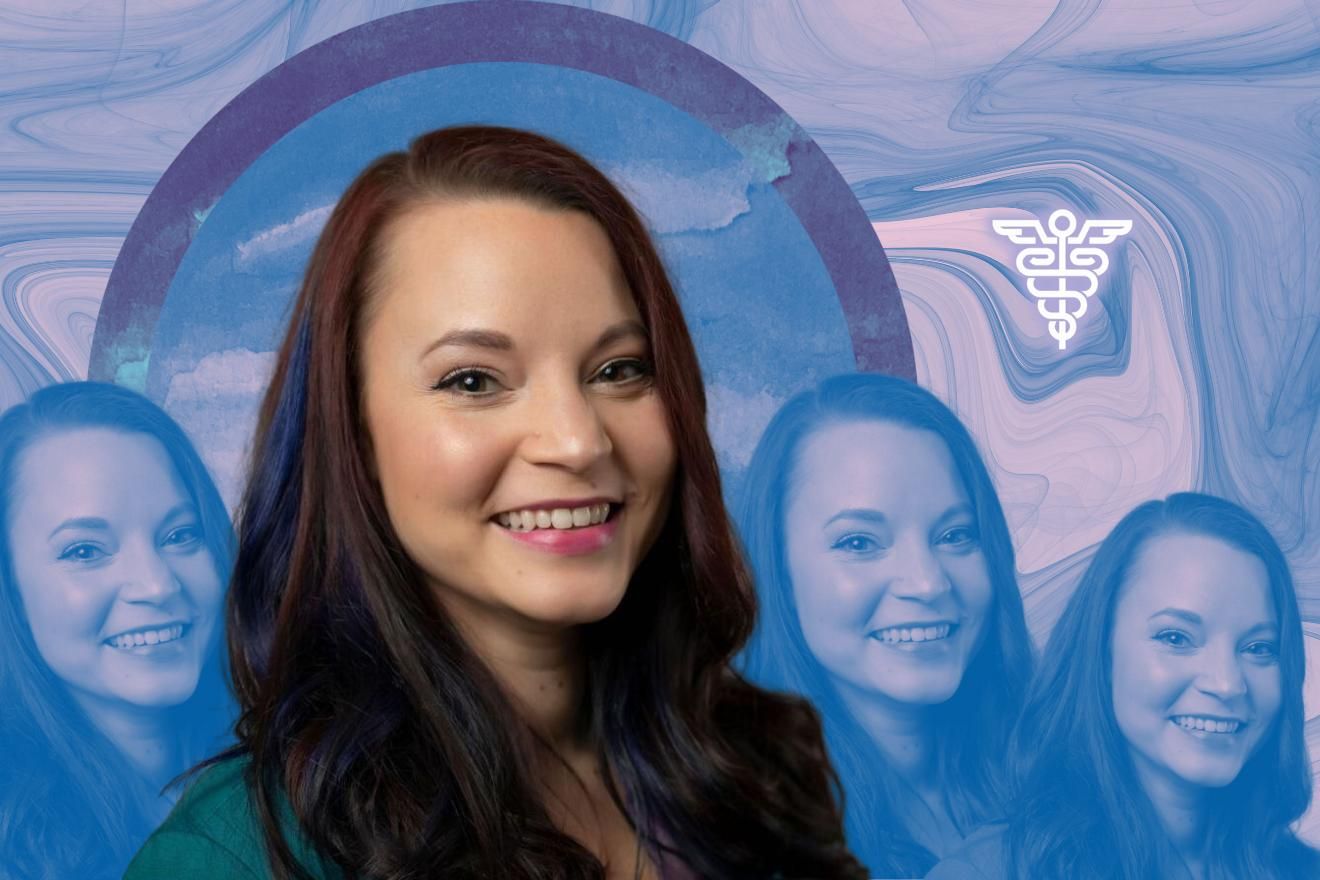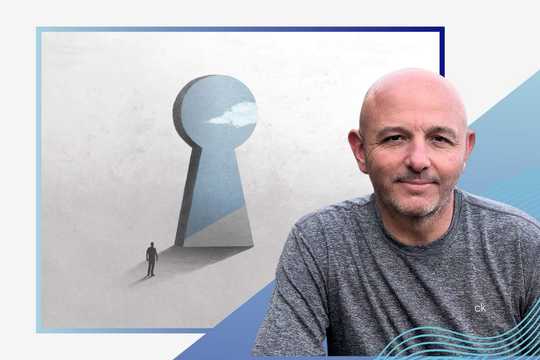The War on Drugs started centuries ago. Take a trip through history with Vilmarie Fraguada Narloch, PsyD, co-founder and director of the Sana Healing Collective, a nonprofit, psychedelic-assisted therapy clinic in the Humboldt Park neighborhood of Chicago.
Read on to learn how this war shaped the way we provide psychedelic therapy. We explore Vilmarie’s passion for ending the War on Drugs as she paints her version of what that would look like.
“Ending the War on Drugs has to come with an entire cultural shift, including mindset, education, and demystification. We need to address misinformation about drugs that has been drilled into us because of the War on Drugs.”
—Vilmarie Fraguada Narloch, PsyD
Vilmarie’s Fascination With Humanity and Drugs
Before starting our interview, Vilmarie clarified that she primarily identifies as a Puerto Rican cat lady without any cats. She’s a harm reductionist, advocate, and activist working to end the war on drugs. She also happens to be a clinical psychologist who has mostly been working with people who use drugs.
She’s shared that she’s always been fascinated by drugs and drug use of all kinds. This fascination relates to her intrigue and interest in learning about people, humanity, and our desire to change, evolve, grow, and learn about ourselves and our world.
Learn More About Ethics and Legalities From Vilmarie and Psychedelic Support:
- Enroll in Vilmarie’s Course: Psychedelic Therapy For Underserved Populations: Assessing Risks & Benefits
- How Now Lykos Therapeutics (Previously MAPS) Has Paved the Way to Legal MDMA Therapy
- Are Psychedelics Legal Now? Initiatives for Legalization and Decriminalization
- Join Kylea Taylor, MS, LMFT, and Explore Ethical Awareness Tools in Psychedelic Therapy
Vilmarie’s Clinical Work in Substance Use
Vilmarie’s clinical work has focused primarily on working with people who use drugs and also with co-occurring conditions. For instance, it’s often the case that someone who is experiencing chaotic drug use has other things going on. She shared that trauma is a particularly high comorbidity with chaotic substance use.
At this time, clinical research for psychedelics and trauma, specifically in the treatment of chaotic drug use, began to emerge. Vilmarie was keeping an on this because it was piquing her interest. She was curious and excited about what the clinical research was saying.
Feeling Burnt Out and Fed Up With the Mental Health System
As she dove deeper into the research, she became more burnt out with her clinical work. She was frankly fed up with our mental health system.
“[Our mental health system is] very intentionally broken. And I find myself constantly up against walls and barriers. My clients are struggling to find the kind of support that is going to be beneficial to them…Our system does a frankly shitty job at helping people improve their quality of life, particularly black, indigenous, and people of color who use drugs,” adds Vilmarie.
Hearing Promising Results About Psychedelics
During this time, Vilmarie was hearing about the positive and promising results of psychedelics and trauma and substance use treatment.
She was working with a specific client struggling to meet their needs within the system. Vilmarie knew her limitations on how she could help them based on the kind of place she was working. She wasn’t getting what she needed—and her clients weren’t either. And so, she didn’t have the flexibility to do the type of work she instinctively knew could support people.
So, in a moment of frustration, she started looking at becoming a psychedelic therapist. She knew she had to do this herself. That’s when she found the California Institute of Integral Studies program.
Vilmarie’s History Lesson About the War on Drugs
We asked Vilmarie to give an overview of the War on Drugs. She started by giving her strong standpoint.
“Ultimately, I’ll just say that the war on drugs, as we know it today, is intentionally developed to oppress people, very intentionally racist and classist, and it continues to do so,” said Vilmarie.
Then, Vilmarie described regulation and criminalization. Regulation is similar to all the other laws that regulate the safety of products. That’s the FDA side of things. Criminalization is when it’s a criminal offense to use, possess, distribute, and sell drugs.
She shared that most people think of the criminalization aspect—such as drug laws—when they think of the war on drugs. However, regulation is particularly relevant to our work in psychedelics right now.
The Late 1700s: Whiskey Tax and Rebellion
A long history of drug laws started in the late 1700s. For example, the Whiskey Excise Tax was passed in 1791. Farmers refused to pay and fought back, which led to the Whiskey Rebellion, which ended in 1794. Through that, it was established that the federal government didn’t have the power to enforce federal and state laws.
Early 1900s: Initial Regulation of Drugs
In the early 1900s, regulation of pharmaceutical manufacturing and sales began. Much of the initial drug laws and drug regulation was about the US trying to get a handle on the opium trade with China. Many leaders disapproved of that and regulation started to take place.
In 1905, Roosevelt recommended laws to regulate interstate commerce, particularly on misbranded things. That’s how the initial 1906 Pure Food and Drug Act was developed. It looked to label drugs such as alcohol, morphine, opium, cocaine, heroin, and cannabis.
The Pure Food and Drug Act required packaging to show what drug it contained and the preparation. As long as it was clearly labeled, anything could be bought and sold without any other restrictions. It was in the interest of protecting people from their snake oil salespeople type of vendors. That’s kind of a basis for all modern laws regulating pharmaceuticals.
1914: Harrison Tax Act
In 1914, the Harrison Tax Act was passed, which required anyone who produced, imported, manufactured, or dispensed in any way certain drugs to register and pay a special tax. There weren’t any severe penalties. Dealers and dispensers had to register yearly, pay a fee, and use particular order forms. It didn’t involve the drug users. This legislation was related to the trading status with China and aimed to reduce opium importation.
Vilmarie shared that this was when we started to see blatant racism in the development of our drug laws. In the interest of drug laws, there were particular groups of people tied to the specific use of things like cocaine, opium, and opioids. For instance, tropes were spread about immoral Chinese opium dens. These included concerns about southern black men who used cocaine and raped white women.
These messages planted a seed that has spread to all other federal controlled substances regulations. At that point, individual use and possession were still not criminalized, but then, things started ramping up.
From the 1950s to the 1970s: Narcotics Control Act
The Narcotics Control Act was passed in 1957, and the harshest penalties resulted. Harry Anslinger, a former commissioner of the Federal Bureau of Narcotics, stepped in and did a lot of work.
The Narcotics Control Act is the foundation for our modern-day drug laws. It was later amended in the mid-60s to include hallucinogens, such as LSD and also barbiturates.
1970: Comprehensive Drug Abuse and Prevention Control Act
In 1970, President Richard Nixon signed the Comprehensive Drug Abuse and Prevention Control Act. This legislation replaced or updated all of the previous drug laws. This act controls drugs under federal jurisdiction. It increased funding for prevention and treatment through health and human services.
John Ehrlichman was the Assistant to the President for Domestic Affairs under President Richard Nixon. Vilmarie shared the quote below.
“You want to know what this [war on drugs] was really all about? The Nixon campaign in 1968 and the Nixon White House after that had two enemies: the antiwar left and black people. You understand what I’m saying?
We knew we couldn’t make it illegal to be either against the war or black, but by getting the public to associate the hippies with marijuana and blacks with heroin and then criminalizing both heavily, we could disrupt those communities. We could arrest their leaders, raid their homes, break up their meetings, and vilify them night after night on the evening news.
Did we know we were lying about the drugs? Of course, we did.”
—John Ehrlichman, Assistant to the President for Domestic Affairs under President Richard Nixon
The Comprehensive Drug Abuse and Prevention Control Act also increased funding for the actual control of drugs. This legislation led to the formation of the Drug Enforcement Agency (DEA) in 1973. Its mission focused on enforcing and regulating drugs. Taxation was no longer on the table.
All of this criminalization work was separate from scientific and medical decisions. There weren’t any mandatory minimums and no death penalty for drug use. It was all in consideration of the best available evidence, at least for a time.
The 1980s Until Now: Crack Epidemic
Vilmarie explained that in the 80s, our system worsened as we experienced the crack epidemic.
“There were these really ridiculous disparities with crack to powder cocaine. In that association, again, racism comes up with crack’s association with violence, particularly with African American folks in the US. And that becoming a big issue in the eyes of leaders,” explained Vilmarie.
During this time, paraphernalia laws were passed. In 1984, the Controlled Substance Registrant Protection Act overturned all of the logic of scheduling to the DEA versus looking at scientific evidence. For instance, MDMA was put at Schedule 1, which meant there was no scientific evidence of any medical benefit and also a high propensity for addiction and abuse.
“So that’s where we get to see our modern drug laws and where we’re at today. And certainly, things have increased, ramped up, and become worse in a lot of ways since then,” shared Vilmarie.
The War on Drugs’ Impact on Psychedelic Therapy
Now that we’ve traveled back to our current time, we asked Vilmarie how the history of the War on Drugs affected the way clinicians, therapists, and various healers practice psychedelic therapy today.
Severely Limiting Science and Clinical Research
Vilmarie shared that the War on Drugs has severely limited current scientific advances. This includes the ability to do clinical research utilizing these substances. This limitation is mainly because, since the 80s, any precursors to these substances were regulated and criminalized. For instance, even Sudafed is over-regulated because due to its potential for methamphetamine production.
She also mentioned that formalizing the FDA process and examining effectiveness and safety made clinical research more difficult.
“In the 60s, the FDA started to evaluate prescription drugs. They removed thousands of drugs from the market in the decade. And now we have this new drug process, which can take decades. It costs billions of dollars and includes preclinical research and multiple phases of clinical trials,” adds Vilmarie.
She shared that the MDMA for PTSD trials by the Multidisciplinary Association for Psychedelic Studies clearly demonstrates this. The transparency and openness about sharing the process with the public have helped people better understand what it takes to get a drug to market.
Negative Impacts of Criminalization
In some places in the world, certain plant medicines are legal to use. However, Vilmarie explained that the US’s War on Drugs impacts global decisions about drugs, drug use, and regulation.
“We have tons of research from the ’60s and ’70s that demonstrate some benefits of psychedelics. Certainly, even before that, we have thousands of years of lived experience and human experience with plant medicines from indigenous healers and leaders showing us the power of these drugs to shift our world views and perspectives and do powerful healing. But despite that, we’re still up against all these laws and regulations,” expressed Vilmarie.
Many folks need to go underground to seek healing and to provide healing. She explained that this is due to the criminalization of these substances. This situation means they are in an unregulated space with increased risks.
“[In the underground space], it’s harder to determine which facilitators and guides are experienced and can hold this kind of space. It’s harder to determine that safety, and of course—then we have problems with abuse and manipulation and things like that. And that’s just kind of a scary place,” shared Vilmarie.
She also mentioned that an above-ground regulated space isn’t necessarily safe either.
“There’s still a bit of a wild west out here as far as that’s concerned. A lot of folks don’t know how to best balance what’s legal versus what’s ethical versus what’s safe. And so we get into kind of a mess,” said Vilmarie.
Vilmarie’s written a couple of articles to help clinicians who want to help people navigate this space ethically and legally without risking their licenses.
What Ending the War on Drugs Looks Like to Vilmarie: A Entire Cultural Shift
We asked Vilmarie what her version of ending the War on Drugs looks like. She explained that it’s a complicated response because it’s hard to know what will be the most effective.
“We’ve been trying to [end the War on Drugs] for decades. It has to come with an entire cultural shift, including mindset, education, and demystification. We need to address misinformation about drugs that has been drilled into us because of the War on Drugs,” explained Vilmarie.
She shared that there’s a lot of stigma that we all carry, whether we know it or not, about drugs and drug use and about people who use drugs. A massive undertaking in itself would be to shift people’s understanding of that. In addition, we need to change the laws, which many of us are trying to do—especially with psychedelics right now.
Clarifying Misconceptions About Drugs
We asked Vilmarie to address and clarify her top misconceptions about drugs. She shared that the Controlled Substances Act, including the scheduling of drugs, is not meaningful or based on scientific evidence. It’s based on what the law enforcement folks wanted, including deciding what schedule to put certain substances on.
Vilmarie wants people to understand that drug use—particularly chaotic drug use—is complex and often a symptom of a broken system. Much of what we’ve learned about drugs and drug use is not necessarily true. Some people use drugs and never develop dependence or addiction. There’s research that shows that they are capable and successful people who contribute to society.
Harm Reduction and Public Health-Focused Approach
Vilarmarie explains that cannabis is one of the most significant models we can draw from in terms of what to do and not to do. However, it’s hard to know the best option for everyone when it comes to changing drug laws. Every state has its version, and other states are learning from it.
Follow your Curiosity
Sign up to receive our free psychedelic courses, 45 page eBook, and special offers delivered to your inbox.She talked about how other countries are using interesting approaches, including focusing on harm reduction and public health. All drugs are decriminalized, and more effort is put into public health services such as evidence-based treatments, overdose prevention centers, safe syringe exchange sites, and drug checking. These approaches put the onus of safety, protection, and community back on the people.
How We Can Move the Dial Towards Science and Reality-Drug Education
We asked Vilmarie to share some things that providers can do to help move our current culture toward science and reality-based drug education.
Get Educated
Vilmarie explained that most of us in the clinical field still need to learn about science-based drug education. There may be a unit in a pharmacology course that teaches some of these things. However, these are often limited and need to be more informed. That education is coming from the powers that want to control and regulate drugs.
“Get educated, learn from harm reductionists in your community and directly from people who use drugs themselves,” advises Vilmarie.
Move Out of the Way
Next, Vilmarie thinks that many folks need to move out of the way for people who use drugs and understand this space and, in particular, a harm reduction approach. We need to let them lead. They should be the ones who educate us on how the law should be changed. Listen to what they need for their health, safety, well-being, and quality of life.
Use Your Advantages for the Greater Good
Vilmarie explained there are instances where being educated and moving out of the way may not be the most effective. That’s because the reality is that certain leaders and lawmakers still want the science and researchers.
“If you’ve got some letters behind your name, you can use that power to the advantage of the greater good. Again, not in a way that you’re taking up space or taking anything away from the people who have lived experience, but in the cases where those people can’t get into a room but you can uplift their message to the powers that be,” said Vilmarie.
Vilmarie’s Recommended Resources on the War on Drugs:
- The Students for Sensible Drug Policy (SSDP): Just Say Know Peer Drug Education Program
- SSDP Just Say Know: Drug Policy 101
- A Brief History of Drug Laws in America (From ‘The House I Live In’ Directed by Eugene Jarecki)
- The War on Drugs is a Huge Failure — An Illustrated History of Our Modern WoD
- Jay Z’s brief on the War on Drugs






